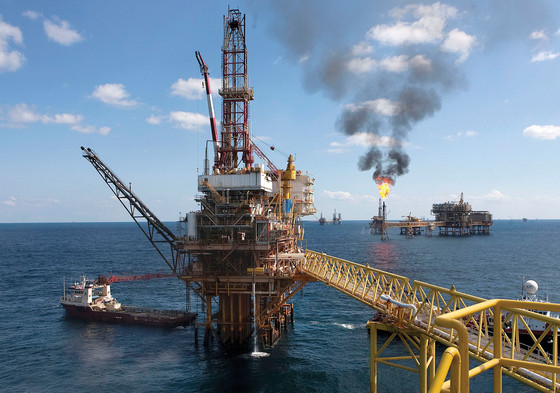 | |||
Dear Colleague,
National oil companies (NOCs) are economic giants. They control at least $3 trillion in assets and produce most of the world’s oil and gas. They dominate energy production in some of the world’s most oil-rich countries, including the Islamic Republic of Iran, Mexico, Saudi Arabia, and Venezuela, and they play a central role in the oil and gas sector in many emerging producers.
But there's one problem.
These companies are poorly understood because of their uneven and often opaque financial reporting practices. And because they are so large, shortcomings in their reporting pose several economic risks.
It's time to peel back the curtain on Really Big Oil.
In our latest issue of F&D, David Manley, David Mihalyi, and Patrick Heller of the Natural Resource Governance Institute (NRGI) pen a very thoughtful and researched look at exactly this challenge and how best to foster (and perhaps mandate) openness.
NRGI's new report and accompanying database focuses on the failure to rigorously scrutinize NOCs and the policies their governments employ to manage them, and how this failure carries major risks for dozens of economies around the world that depend on these companies’ sound management of public resources.
On average, the authors found that NOCs in the Middle East and sub-Saharan Africa disclosed the least amount of information. These findings reinforce the results of the institute’s Resource Governance Index, which revealed that 62 percent of the NOCs reviewed exhibited “weak,” “poor,” or “failing” performance in regard to public transparency.
That's not so bad, is it?
Well, some national oil companies carry huge debts that burden their national economies. Some have debts in amounts higher than 10 percent of their countries’ GDP. Venezuela’s troubled state oil company PDVSA has debt exceeding 20 percent of GDP. Many NOCs have required multibillion-dollar government bailouts in recent years, becoming a costly drain on public finances.
At the peak of the oil price boom in 2013, there were at least 25 “NOC-dependent” countries—those where the NOC collects funds equivalent to 20 percent or more of government revenues (Chart 1). In most cases only a fraction of these resource revenues are then transferred to the governments, with the NOCs spending and investing the rest themselves. The median NOC in this sample transferred only 17 percent of its gross revenues to the state in 2015.
The key here is that the fiscal health of many countries and their governments’ ability to use oil revenues for development depend heavily on how well the NOC is run, how much revenue it transfers to the state, and the quality of its spending. State-owned enterprises can weigh a country down or help propel growth, and in these countries, subpar governance of national resources perpetuates poverty and inequality.
You're right. This is a real problem. So how do we solve it?
To start, NOCs and their governments should ensure that company strategies outline a sustainable vision for their futures. Such a vision can facilitate clear and effective rules on how much these companies are allowed to spend and borrow, and how much they must transfer to the government treasury.
To ensure that these rules are followed, citizens and governments need better reporting from NOCs. Separating public relations from reality in company pronouncements about investments in renewables or boosting commercial efficiency requires consistent reporting on spending, production costs, and revenues.
Like private oil companies, NOCs should also start assessing and disclosing how prepared they are for the coming energy transition. This should include an analysis of climate-related risks, and progress made in diversifying and mitigating those risks.
Finally, in many countries, NOCs are not held sufficiently accountable, either because they don’t disclose enough information, or because formal oversight by government or informal oversight by civil society and the media is inconsistent. Under-scrutinized companies might perform poorly or become vessels for corruption. Increased transparency is a critical lever for holding company leadership accountable and encouraging strong returns on public investment.
Drill deeper and read the full 1600-word article, which contains the latest data, charts and examples from around the world and how best to move forward. This piece is also available in pусский, español, français, 中文, and عربي.
See you next week,
| |||
P.S. I wanted to flag that in our June 2018 issue of F&D, Harvard's David Bloom et al wrote a very detailed and insightful piece on the economics of epidemics.
_____
Make a colleague's day: forward this emailWas this newsletter shared with you? Sign up for future updates
Update your profile for tailored content (new) Unsubscribe from F&D here |
Temas de relações internacionais, de política externa e de diplomacia brasileira, com ênfase em políticas econômicas, viagens, livros e cultura em geral. Um quilombo de resistência intelectual em defesa da racionalidade, da inteligência e das liberdades democráticas. Ver também minha página: www.pralmeida.net (em construção).


Nenhum comentário:
Postar um comentário
Comentários são sempre bem-vindos, desde que se refiram ao objeto mesmo da postagem, de preferência identificados. Propagandas ou mensagens agressivas serão sumariamente eliminadas. Outras questões podem ser encaminhadas através de meu site (www.pralmeida.org). Formule seus comentários em linguagem concisa, objetiva, em um Português aceitável para os padrões da língua coloquial.
A confirmação manual dos comentários é necessária, tendo em vista o grande número de junks e spams recebidos.